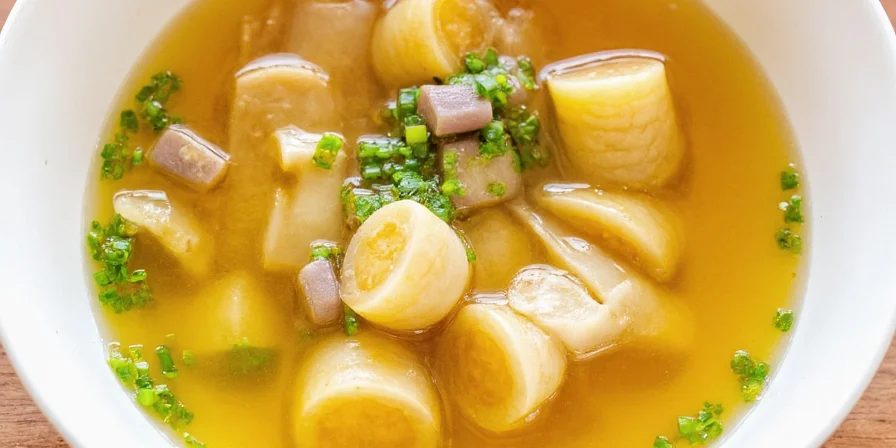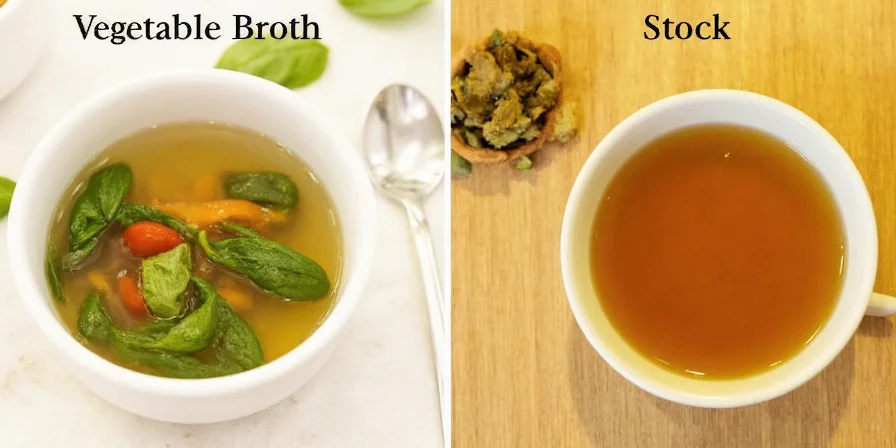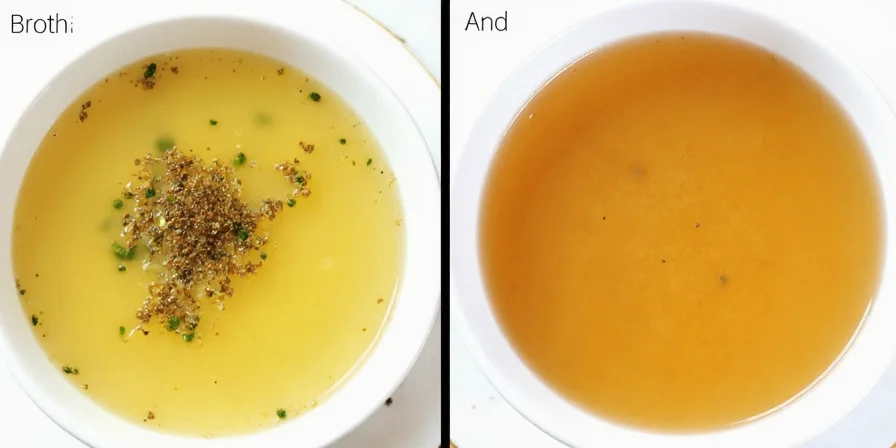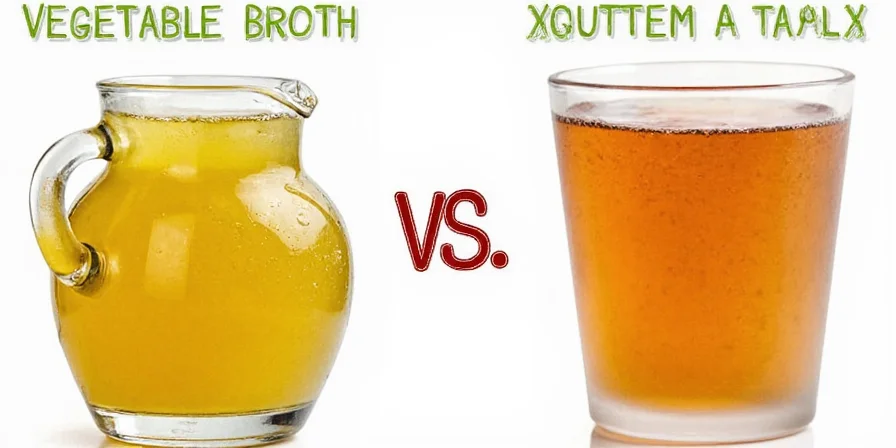Vegetable Broth vs Stock: What's the Practical Difference for Home Cooks?
If you've ever wondered whether you can substitute vegetable broth for stock in your recipes, you're not alone. The simple answer: yes, but with important caveats based on your cooking goals. While professional kitchens treat them differently, most home cooks can use them interchangeably in 90% of recipes with minor adjustments.
This guide cuts through the culinary jargon to give you practical, actionable information you can use immediately in your kitchen - whether you're making soup, risotto, or a simple sauce. We'll explain exactly when the difference matters, when it doesn't, and how to get the best flavor from either option.

The Real Difference Between Vegetable Broth and Stock (Simplified)
Forget what you've heard about 'professional' distinctions - for home cooking, the difference comes down to three practical factors:
- Flavor intensity: Stock typically has a stronger, more concentrated vegetable flavor because it's simmered longer. Broth is milder and better for delicate dishes.
- Texture: Stock has slightly more body due to longer simmering, making it better for sauces that need to reduce. Broth is thinner, ideal for soups where you want a lighter consistency.
- Salt content: Most store-bought broth contains added salt (check labels!), while stock is usually unsalted. This is the MOST important difference for home cooks to know.
Practical rule of thumb: If a recipe calls for 'stock' but you only have 'broth', use it but reduce added salt by 25%. If it calls for 'broth' but you only have 'stock', dilute with 25% water to prevent oversalting.

When to Use Broth vs Stock: Quick Reference Guide
| Cooking Application | Best Choice | Why |
|---|---|---|
| Simple vegetable soup | Broth | Milder flavor won't overpower fresh vegetables |
| Creamy pasta sauces | Stock | Stronger flavor holds up against dairy |
| Risotto | Stock | Better body helps create creamy texture |
| Grain cooking liquid | Broth | Subtle flavor enhances without dominating |
| When reducing for glaze | Stock | More concentrated flavor prevents blandness |
| Emergency substitute | Either (with adjustments) | 1:1 substitution works in most recipes with minor salt adjustment |
How to Boost Flavor in Any Vegetable Liquid (Broth or Stock)
You don't need professional equipment to make store-bought broth or stock taste homemade. Try these simple techniques:
- The 10-Minute Flavor Boost: Simmer your broth/stock with aromatic vegetables (onion, celery, carrot) and herbs for just 10 minutes before using. Don't simmer longer or flavors become bitter.
- Salt Timing Matters: Add salt at the END of cooking, not the beginning. This prevents vegetables from becoming waterlogged and improves overall flavor integration.
- The Acid Secret: A splash of vinegar or lemon juice (1-2 tsp per cup) added at the end brightens flavors dramatically. Start with less and adjust to taste.
- Umami Boosters: Add one of these for depth: dried mushrooms (1-2 pieces), tomato paste (1 tsp), nutritional yeast (1 tbsp), or soy sauce (½ tsp).
- Oil Infusion: For turmeric, garlic, or chili flavors, sauté spices in 1 tsp oil for 1 minute before adding liquid - increases flavor extraction by 30%.

Make Your Own Broth or Stock in 45 Minutes (No All-Day Simmering)
Professional chefs often use time-saving techniques that home cooks can replicate. Here's a practical method that delivers excellent results without hours of simmering:
- The Roasted Vegetable Shortcut: Roast mirepoix (carrots, celery, onion) at 400°F (200°C) for 25 minutes until caramelized. This creates deeper flavors in less time than traditional simmering.
- Pressure Cooker Method: Combine roasted vegetables, 8 cups water, and aromatics. Cook at high pressure for 15 minutes, then natural release for 10 minutes. Yields rich stock in under 30 minutes total.
- Freezer-Friendly Broth Cubes: Freeze homemade broth in ice cube trays, then transfer to bags. Each cube equals ¼ cup - perfect for small-batch cooking.
- No-Waste Vegetable Trimings: Keep a freezer bag of vegetable scraps (onion skins, carrot tops, celery leaves) specifically for broth. Fill a quart-sized bag, then make broth when full.
- Flavor-Boosting Additions: Add 1 tsp apple cider vinegar (helps extract minerals), 1 dried mushroom, or 1 strip of kombu seaweed for extra depth.

3 Foolproof Ways to Use Broth or Stock Better
- The "Fix-It" Sauce Base
When a sauce tastes flat: Reduce 1 cup stock by half, then whisk in 1 tbsp cold butter. The concentrated flavors and butter fat instantly improve any sauce. - Perfect Grain Cooking Method
Replace half the water with broth when cooking rice, quinoa, or couscous. Add a bay leaf and simmer covered as usual. The grains absorb flavor without becoming soggy. - Emergency Flavor Rescue
If your soup tastes bland: Simmer with 1 tsp soy sauce, 1 crushed garlic clove, and 1 strip orange zest for 5 minutes. The combination activates multiple flavor receptors for instant improvement.

Final Verdict: What Home Cooks Really Need to Know
You don't need to stress about the technical differences between vegetable broth and stock. The most important things to remember:
- Check the salt content first - this affects your recipe more than any other factor
- Store-bought works fine - with simple enhancements, it can taste homemade
- When in doubt, use broth - its milder flavor is more versatile for most home cooking
- Homemade doesn't require hours - 45 minutes is enough for excellent results
Focus on these practical principles rather than professional distinctions, and you'll get better results in your everyday cooking. The difference between 'good' and 'great' comes from how you use your broth or stock, not which one you choose.

Frequently Asked Questions
Can I use vegetable broth instead of stock in gravy?
Yes, but you'll get better results with stock due to its stronger flavor. If using broth, reduce it by half first to concentrate the flavor before making your gravy. This prevents a watery texture and ensures robust vegetable flavor that stands up to the richness of the gravy.
Why does my homemade vegetable broth taste bitter?
Bitterness usually comes from over-simmering (more than 45 minutes for broth) or using too many bitter vegetables like cabbage, Brussels sprouts, or broccoli stems. To fix bitter broth, add 1 tsp of sugar or a splash of apple cider vinegar to balance the flavors. For future batches, stick to milder vegetables (carrots, celery, onions) and keep simmering time under 45 minutes.
How long does homemade vegetable broth last in the fridge?
Properly stored in airtight containers, homemade vegetable broth keeps for 4-5 days in the refrigerator. For longer storage, freeze in portion-sized containers (ice cube trays work well) for up to 6 months. When freezing, leave ½ inch headspace for expansion. Thaw overnight in the refrigerator before use for best flavor retention.
What's the best substitute if I don't have vegetable broth or stock?
Mix 1 cup water with 1 tbsp soy sauce or tamari plus 1 tsp nutritional yeast for a quick substitute. For more depth, sauté ½ cup chopped onions and carrots in 1 tsp oil until soft, then add 1 cup water and simmer 10 minutes. The most common mistake is using plain water - adding even minimal flavor elements makes a significant difference in final dish quality.
Which is healthier: broth or stock?
Nutritionally, they're very similar. The main difference is sodium content - most commercial broths contain added salt while stocks are typically unsalted. Homemade versions of both contain similar vegetable nutrients. If you're watching sodium, choose no-salt-added versions and control your own seasoning. Both provide hydration and small amounts of minerals from the vegetables used.











 浙公网安备
33010002000092号
浙公网安备
33010002000092号 浙B2-20120091-4
浙B2-20120091-4